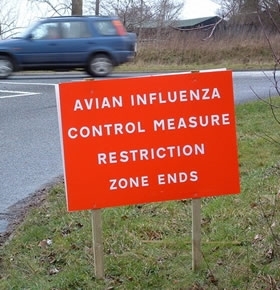 By Roger Draycott, GWCT Head of Advisory
By Roger Draycott, GWCT Head of Advisory
Each autumn we expect more cases of avian flu in Europe. Wild birds (mainly in tufted ducks) and some poultry units have tested positive in: France, Hungary, Poland, Croatia, Germany, Austria, Switzerland, Denmark and the Netherlands here.
Each time it is identified bio-security measures are put in place; but these may be problematic if it is found in wild birds, hence why all those in the countryside must remain vigilant – and report any suspected cases here.
Advice on how to spot avian influenza (bird flu), what to do if you suspect it, and measures to prevent it is provided by Defra and the Animal and Plant Health Agency here. You can also sign up for the alert service here.
Avian influenza – what is it and how is it spread?
Bird flu, or avian flu, is an infectious type of influenza that spreads among birds. The disease spreads from bird to bird by direct contact or through contaminated body fluids and faeces. Avian influenza isn’t an airborne disease nor is there evidence that any recent strain of avian influenza has been able to spread directly between people.
 Free weekly newsletter
Free weekly newsletter
Stay updated and get all the latest GWCT advisory news delivered straight to your inbox each week.
Sign up FREE to the Weekly GWCT Newsletter >